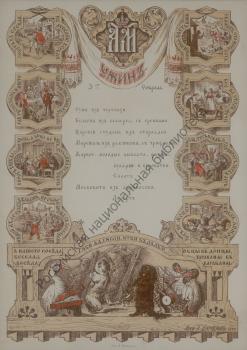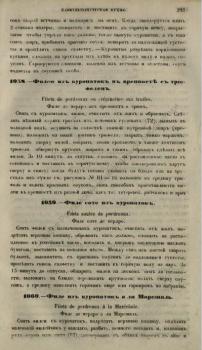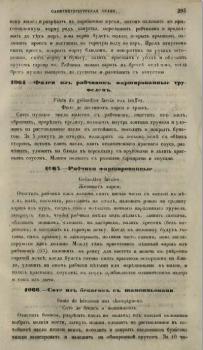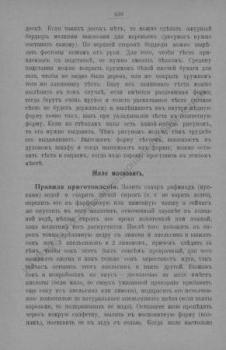Petersburg Cuisine
A. I. Charlemagne. Menu of the Dinner Hosted by the Tsarevich of Russia and Grand Duke Alexander Alexandrovich on February 3, 1870.
Lithograph by A. Petersen (St. Petersburg). 1870.
Chromolithograph. 29,4х20,7 cm.
Recipes of Dishes
Fillets of Hazel Grouse Stuffed with Truffles
Cooking rules
Cut off fillets from the partridges, remove the skin, separate a small fillet from each, beat off, add a little salt and lay a row of minced game, then dip both sides in the egg and grated bread, and finally into butter and grated bread. 15 minutes before serving, beat off and trim correctly with a knife and, puting each fillet on the grill, cook directly over hot coals, fry until golden on both sides; then lay on a dish and serve with game juice, not very strong broth, mashed potatoes or a side dish of your choice.
Partridge Fillets a la Marechal
Cooking rules
Cut off fillets from the partridges, remove the skin, separate a small fillet from each, beat off, add a little salt and lay a row of minced game, then dip both sides in the egg and grated bread, and finally into butter and grated bread. 15 minutes before serving, beat off and trim correctly with a knife and, puting each fillet on the grill, cooked them directly over hot coals, fry until golden on both sides; then lay on a dish and serve with game juice, not very strong broth, mashed potatoes or a side dish of your choice.
Muskovite Jelly (Gelées à la Moscovite)
Refined sugar — 300 g
Water — 1 bottle
Oranges — 4–5 pcs
Limons — 2 pieces
Gelatin — 7 sheets
Cochineal — for color
Cooking rules
Mix refined lamp sugar with water and cook a light syrup (that is, do not boil for a long time), pour it into a porcelain or stone cup and immediately put gelatin pre-soaked in cold water into it, stirring the syrup with a spatula or spoon all the time, until the gelatin has dissolved. After that, put thinly cut zest from a lemon and an orange into the syrup and squeeze the juice from 3 orange and 2 lemons, and make sure that this juice is completely transparent, why squeeze lightly and as soon as the juice stops flowing, leave this orange and take another. After squeezing the juice and tasting — does the jelly have enough acid (if not enough, then add more orange or lemon juice in addition to the above proportion), tint it with crushed cochineal to a natural orange color. Strain the cooled jelly through a wet napkin, pour into a Muscovite mold (cap), put it in ice with salt. When the jelly is so firm that it gets a similar texture to a soft-boiled egg, close the mold tightly with a lid, start to rotate it in one direction or the other until the jelly freezes from the edges. Turn out the ready jelly to the plate in the same way as ice cream.
Explanations and notes
The difference between Muscovite Jelly from ordinary jelly. Muscovite Jelly differs from ordinary jelly in that it should be frozen on the edges, like popsicles, and frozen in the middle, like jelly, which results in two different colors and two tastes.
Light syrup. The syrup should be light so that the jelly freezes better. If a thick, i.e. sticky syrup is cooked, then the jelly does not freeze for a long time.
Sugar. For Muscovite, refined sugar is taken so that the syrup is cleaner.
The amount of gelatin. Gelatin is put less than in ordinary jelly, because Muscovite gets cold only in the middle, and the edges should freeze. This jelly is not filtered through paper because, subject to certain rules, it can be transparent enough without clarification, as is necessary for frozen jelly.
Grade of gelatin. You need to take a good grade of gelatin — poor grade makes jelly very cloudy.
Boiling. You should also not boil syrup with gelatin, because this will make the jelly cloudy.
Orange or lemon juice. If you squeeze the juice out of an orange or lemon with all your might, it will turn cloudy; to avoid this, it is better to take more oranges, since the jelly is not clarified.
Straining. It is more convenient to strain the jelly while it is hot, because the cooled becomes thicker, freezes on a napkin and is poorly filtered.
Chilling. Muskovite Jelly should only be slightly cooled and immediately frozen, not allowing it to freeze until fully cooked, because then it will not freeze with crystals, as it should be. Muskovite Jelly can also be frozen in liquid form, without waiting until it hardens until half cooked (like a soft-boiled egg).
Form. In order to prevent salt from getting into the jelly when freezing, it is more convenient to take the form with a lid. These forms are sold in stores under the name "caps for Muscovites".



